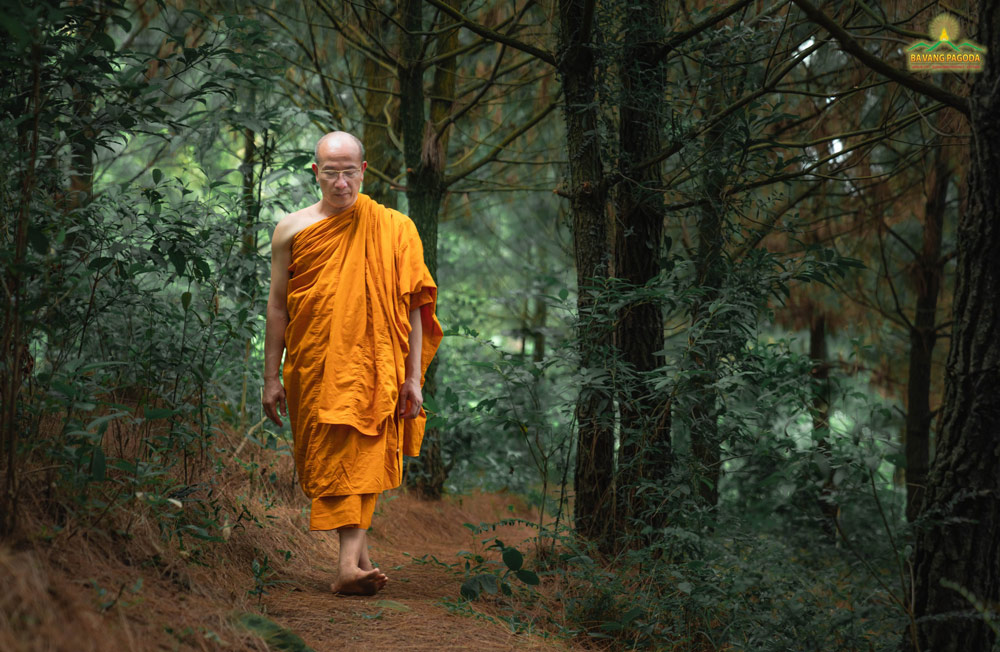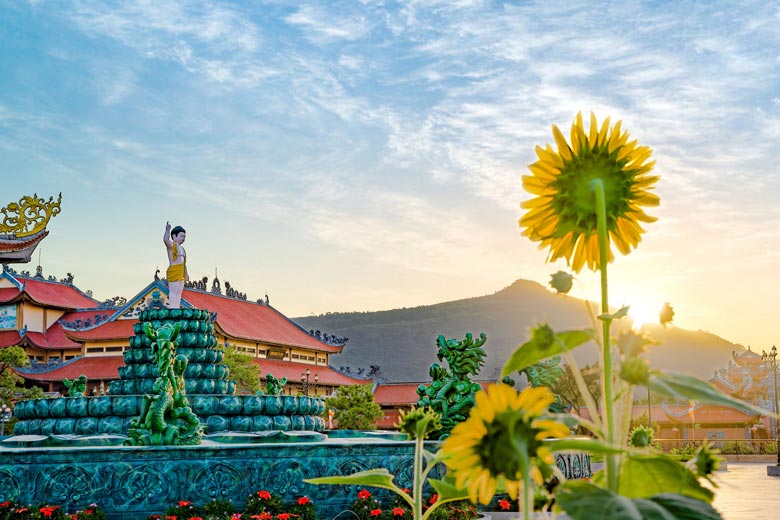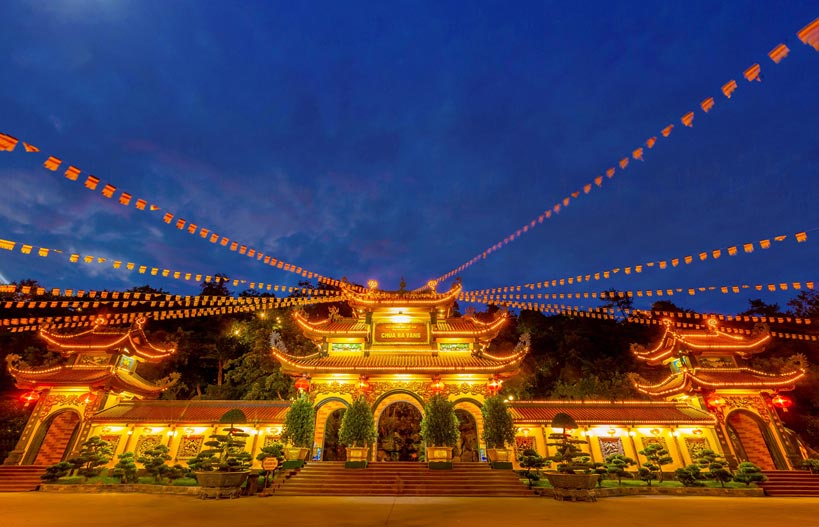What is Dhutanga - the 13 noble ascetic practices praised by the Buddha?
Table of contents [Hide]
- The origin of Dhutanga
- What are the 13 ascetic practices of Dhutanga?
- 1. Wearing robes of rags
- 2. Wearing only three robes
- 3. Living on alms
- 4. Walking for alms house-to-house
- 5. Eating at one sitting
- 6. Eating from an alms bowl
- 7. Never setting aside food
- 8. Dwelling in the forest
- 9. Living under the tree
- 10. Dwelling in the outdoors
- 11. Dwelling in the cemetery
- 12. Being able to rest in any place
- 13. Never lying down for sleep
Dhutanga is one of the ascetic pathways that help practitioners cultivate their minds and bodies as well as shake off all seductive defilements. In the Buddha's time, a large number of his disciples practiced Dhutanga and subsequently attained enlightenment. Among those, Venerable Mahakassapa is the foremost holy monk in practicing Dhutanga.
Even though arduous, practicing Dhutanga tremendously supports the practitioners in their cultivation journey to enlightenment. Moreover, if someone genuinely practices Dhutanga, the Buddha Dharma will surely stay long-lasting in this world, benefiting all sentient beings.
What are those 13 noble Dhutanga practices?
Let's find out in the teaching of Thay Thich Truc Thai Minh as follows.
The origin of Dhutanga
After Prince Siddhartha (later known as Shakyamuni Buddha) had clearly seen the four noble truths of life, namely birth, aging, sickness, and death, he made a vigorous vow to leave behind all the magnificent castles, put on a monk's robe (robes of rags), and search for a proper teacher. Afterward, he practiced all kinds of the ascetic methods existing at that time, for example, torturing his own body, exposing himself to harsh weather conditions, fasting, etc. There were even days when he only ate a pea, a sesame, or a peanut per day. He pushed himself to extreme asceticism that his body was utterly emaciated and his eye sockets were extremely deepened. However, his practice didn't help him attain enlightenment but only led his body to extreme exhaustion.
Eventually, he realized that extreme asceticism would never bring about any benefits. Hence, he returned to the asceticism of the middle way, in which he sufficiently nurtured his physical body to practice the Dharma without any extreme mortification or excessive indulgence. Subsequently, thanks to pursuing this method, he attained supreme enlightenment. Thereafter, the Buddha instructed the Sangha on the practice of Dhutanga and also highly praised those 13 ascetic practices himself.

Shakyamuni Buddha attained supreme enlightenment after 49 days and nights of meditation.
What are the 13 ascetic practices of Dhutanga?
The Buddha highly praised the ascetics who vowed to practice Dhutanga, as it benefits both the ascetics themselves and all sentient beings of all realms. In the Milindapanha sutra - lesson “The benefits of Dhutanga,” Venerable Nagasena explained that the powers and miraculous benefits of 13 Dhutanga practices were beyond words. Dhutanga is like a robust nurturing ground for all good deeds to grow, a remedy for humanity's mental sufferings, a field of blessings for both heavenly and human beings, and a refuge for all beings to escape the fear of birth, aging, sickness, death, etc.
1. Wearing robes of rags
Robes of rags are made of dusting rags sewn together. Those are the remaining pieces of cloth used to wrap the corpses after the cremation and were thrown away in the cemetery or hospitals, etc. Those could also be the rags scattering over the ground after being dragged in by dogs or birds. The ascetics will collect those rags, carefully wash and then sew them together into a wearable robe. This helps the ascetics be independent of the offerings of the givers.
2. Wearing only three robes
A Dhutanga practitioner only possesses three robes, namely an outer robe to cover the outside, an upper robe, and an inner garment. Throughout a lifetime as a monk, an ascetic just has those three robes which would be mended in case of being torn. He can only change to another when the robes are beyond repair.

The possessions of each monk at Ba Vang Pagoda only consist of three robes and one alms-bowl.
3. Living on alms
The Dhutanga practice of living on alms means that an ascetic must hold a bowl to walk for alms (mendicancy) without waiting for the givers' invitation. Alms-round is tremendously beneficial for the mendicants, for example, helping to free their minds from attachment, reduce defilements, eliminate arrogance, cultivate perseverance, tolerate criticism, and especially create opportunities to guide sentient beings into the ocean of the Buddha Dharma.
4. Walking for alms house-to-house
An ascetic walks for alms sequentially from house to house without skipping any. He does not discriminate between the rich and the poor, nor choose or criticize the food he receives.
5. Eating at one sitting
After the alms round, the practitioner only sits to eat once a day. After standing up, they will not eat anymore, even if someone comes to offer additional alms.
6. Eating from an alms bowl
As in the Buddha's time, monks only eat their collected food from their alms bowls.
7. Never setting aside food
In the seventh practice, after the ascetic has finished his meal, any leftover food or additional offerings from the alms-givers are not kept for the next day. Therefore, monks only collect enough alms for one meal.
8. Dwelling in the forest
Forests are exceptionally valuable for the ascetics. Forests are quiet and tranquil, hence, perfectly suitable for the ascetics to practice meditation, discipline themselves, and eliminate all the secular desires. In addition, practicing in the forest can help the ascetics eliminate all inner defilements and overcome the fear of snakes, centipedes, poisonous insects, heavy rains, and fierce winds.

The forest is a tranquil place perfectly suitable for the ascetics to practice meditation.
9. Living under the tree
The ascetics practice the Dharma under a tree. However, after every three nights, he has to move to another place in order not to grow attached to any comfortable sleeping place.
10. Dwelling in the outdoors
When a monk observes Dhutanga, regardless of extreme weather conditions, he must stay outdoors and must not seek any shelter. If his mind starts to be shaken and his feelings emerge, he must let go of them to purify the mind by himself.
11. Dwelling in the cemetery
An ascetic resides in the cemetery to combat his own fears and face the ghosts.
12. Being able to rest in any place
Being able to rest in any place means that the ascetic practices adapting to situations, rather than being picky about his resting environment. The sleeping place can be near a haystack, a tree, a buffalo cage, or anywhere else.
13. Never lying down for sleep
This practice is exceptionally difficult as the ascetics are only allowed to sleep in sitting positions, lotus positions, walking, or standing without lying down.
Nowadays, in the degenerate Age of Dharma, it is extremely hard to attain the holy fruits. Moreover, preserving and upholding the Buddha's Dharma are the missions of the monks. Therefore, the prosperity and collapse of the Sangha are correspondingly synonymous with the prosperity and collapse of Buddhism. If Buddhist pagodas and temples are magnificently constructed, yet the monks there do not practice properly, they can hardly benefit sentient beings. Therefore, one should genuinely practice the Dharma to enlighten themself and then others. That is the only way to preserve, uphold, and make the Dharma stay long-lasting in this world.
Hopefully, Thay Thich Truc Thai Minh's teachings will help you better understand Dhutanga - the 13 ascetic practices that the Buddha always praised.
In the upcoming posts, we will continue updating useful information on the benefits and necessary conditions for practicing Dhutanga. See you in the next post!





















